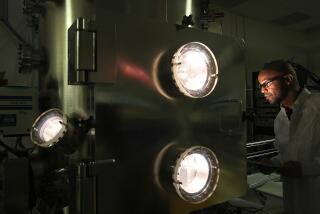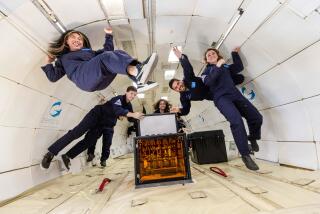Rechtin Back at Work, Joins USC Faculty
- Share via
Eberhardt Rechtin, the recently retired president of Aerospace Corp., is joining the University of Southern California faculty to establish the nation’s first academic programs for systems architecture in aerospace and related fields.
Rechtin served for 10 years as president of El Segundo-based Aerospace, a nonprofit corporation that provides engineering and architectural services for the Air Force’s space program. The low-profile company, which had 1986 revenue of $323 million, is a primary technical resource for the nation’s military space activities and counts more than 500 scientists and engineers with doctorates on its staff.
With his own Ph.D. in engineering from Caltech, the 62-year-old Rechtin previously was chief engineer at Hewlett-Packard and is a former assistant secretary of defense.
The establishment of the graduate program for aerospace architecture at USC signifies the growing importance that the field is gaining in industry, as aerospace systems become increasingly complex and require more integration of various parts, Rechtin said in a recent interview.
The space station, the Strategic Defense Initiative (“Star Wars”) and the Worldwide Military Command and Control System are a few examples of systems of such vast complexity that their conception is not so much a matter of traditional engineering as it is architecture, Rechtin said.
“Architecture is a product of a single man’s mind,” he remarked. “I don’t know if that is always true, but the architecture of these complex systems is a product of a very limited group of people.”
Maxime A. Faget, for example, is widely regarded as one of the great aerospace architects, credited with such conceptual designs as the U.S. Mercury, Gemini and Apollo spacecraft. When the space shuttle came along, it did not have a strong single architect, Rechtin noted.
“It got built a little more like cathedrals in Europe, where one architect builds a little bit and another one comes along and picks up where the last one left off,” he said. “One of the early architectural errors (on the shuttle) was on the economic analysis. It ended up being horrendously expensive for the job it has to do.”
The cost of large aerospace systems has increased rapidly in recent years, and now $10-billion systems are not unusual. These multibillion-dollar systems need architects to integrate the various operating systems, much as a building architect fits together a building’s structure, heating, electrical and plumbing systems.
“All of the key decisions that determine cost performance and schedules in a large system are made before the first design review,” Rechtin observed. “It means all the mistakes occur in the first half hour, as a friend of mine says.”
There are no other schools that specifically teach aerospace architecture, Rechtin said. The type of student he expects to join his architecture program will represent only the most capable engineers, possibly no more than 3% to 5% of the profession, Rechtin said.
“The function has been germinating in the profession for a long time,” he added. “If there is aerospace architecture, then there must be architects.”
USC has an undergraduate aerospace engineering school with several hundred students, one of the largest in the country. “USC is in the top 10 of engineering,” he said.
“They graduate their students and put them into local industry with no problem. They are right where all of the key companies are.”







